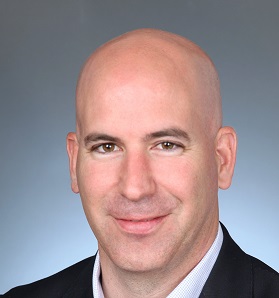Mexico Tower Partners’ MXN2.125bn tower securitisation was fairly innovative as it was a new structure for Mexico’s domestic markets, and certainly new for the telecoms sector. Why did you opt for this new structure over other, potentially more familiar, alternatives?
There were indeed other formats that we considered. For example, we had in place a syndicated loan with a number of banks – where we could have sought additional liquidity to support new liquidity requirements. We could have simply kept going in that direction.
We could have also placed a corporate bond in the local markets, placing additional senior unsecured debt with traditional fixed income investors.
What we decided was to try to finance ourselves in a way similar to how similar companies are financed in more developed markets – such as the United States. Doing this kind of fundraising through an asset-backed security, where you are able to segregate a specific portfolio of assets and secure direct financing for those assets, was an attractive option, particularly in the long term. This will help support our investment diversification strategy as we grow the potential group of assets that we can pool and securitise.
 With any new structure, challenges tend to crop up. Can you share anything about your experience – and that of the lead manager – in getting the deal done?
With any new structure, challenges tend to crop up. Can you share anything about your experience – and that of the lead manager – in getting the deal done?
The local market didn’t know how to interpret the structure because of its novelty, so there was some educating that needed to be done with local investors. We had to familiarise investors with the mechanics of the transaction. The goal was, as much as possible, to replicate the same structure seen in other markets, within Mexico, but the surrounding infrastructure – in the form of investor familiarity, rating familiarity, tenor and structural familiarity and the like – had to be developed because it was crucial to the transaction’s success.
Where was the demand for information concentrated? What were investors most interested in learning about?
There were two areas that investors probed for more information: the first was industry related and the other related to structure. For most institutional investors in Mexico, the tower industry – and all of its unique attributes – is still fairly new and investment exposure is still quite low relative to other sectors of the economy, so there was some work to be done on detailing the industry’s dynamics, and its future prospects within Mexico and globally.
There were also questions about the structure of the transaction. It had a soft bullet-type structure that essentially doesn’t amortise for the first five years, and meaning to the extent the debt is not refinanced at expected the maturity, 100% cash flow sweep toggles on to pay down the securitisation, and a significant step-up in interest occurs. Investors were particularly interested in the structure of the trust and the securities themselves – so understanding ground leases, the tenant leases, the financial metrics around the towers themselves, and how they all worked together. We were pleased with the pricing – despite its novelty and some of the noise around NAFTA and its potential impact on the market, the deal ended up pricing at the target price originally defined.
Do you think the transaction was helped or hindered by the fact that this was a first in the domestic market?
It’s difficult to say. Many people have deployed this structure in the past, so there is a proven track record for it – albeit in other markets with slightly different prospects and dynamics. On the other hand, the novelty of the structure in Mexico helped us define – together with investors – how we wanted the transaction to work. This transaction is likely to form the basis of future deals, so having the capability to shape how the structure works within the Mexican context is a significant benefit. It could help create a template for other borrowers to come to market as well, so it isn’t a benefit just for Mexico Tower Partners but the whole industry in a sense.
Where does this transaction sit within the broader context of Mexico Tower Partners’ funding objectives for 2018?
We don’t have any specific transactions on the cards for 2018, but we are carefully monitoring the market. Notwithstanding any significant acquisition opportunities that come up, we are funded for the year 2018 given our current growth prospects; the securitisation allowed us to prepay our bank debt, and provided additional cash to reinvest into the business – allowing us to buy and construct more towers.
The tower market in Mexico and all over the world is growing at very high rates. Mexico today has just over 30,000 towers, and according to multiple studies that number will need to double over the next few years. That said, there is a huge investment opportunity on the horizon that we are closely monitoring, and our goal is always to continue investing while securing strong sources of financing to help us achieve those goals.
We are carefully monitoring how to expand capacity of the existing network. Mexico still has many regions with insufficient mobile coverage, which translates into a significant opportunity for Mexico Tower Partners over the next few years.









